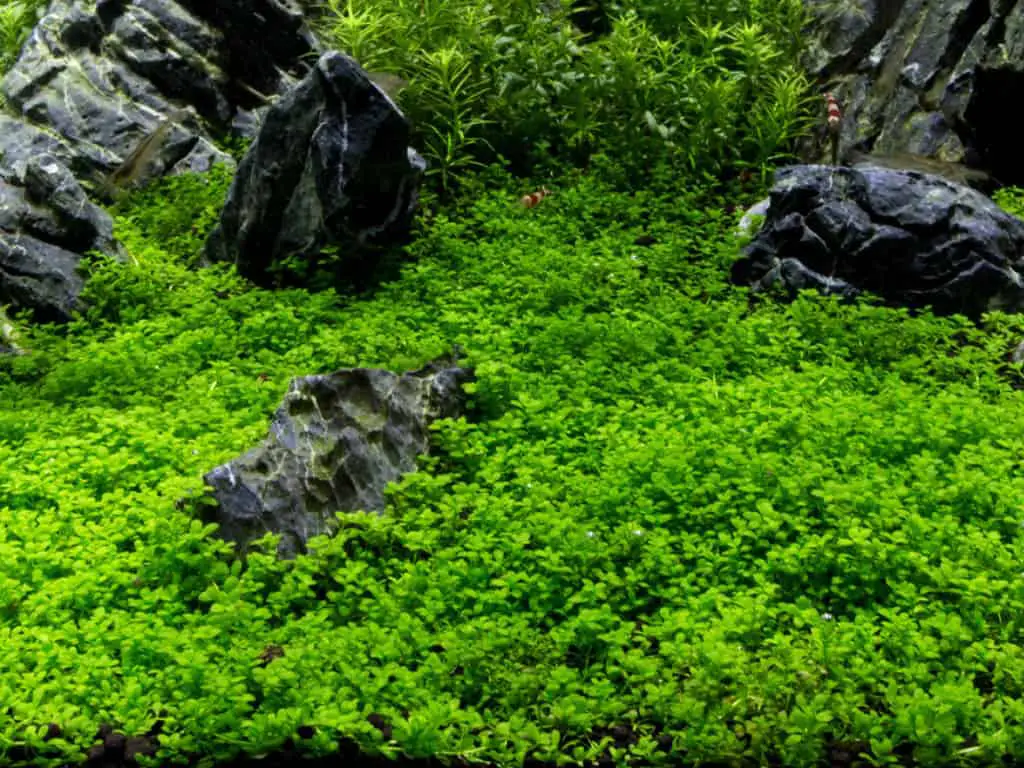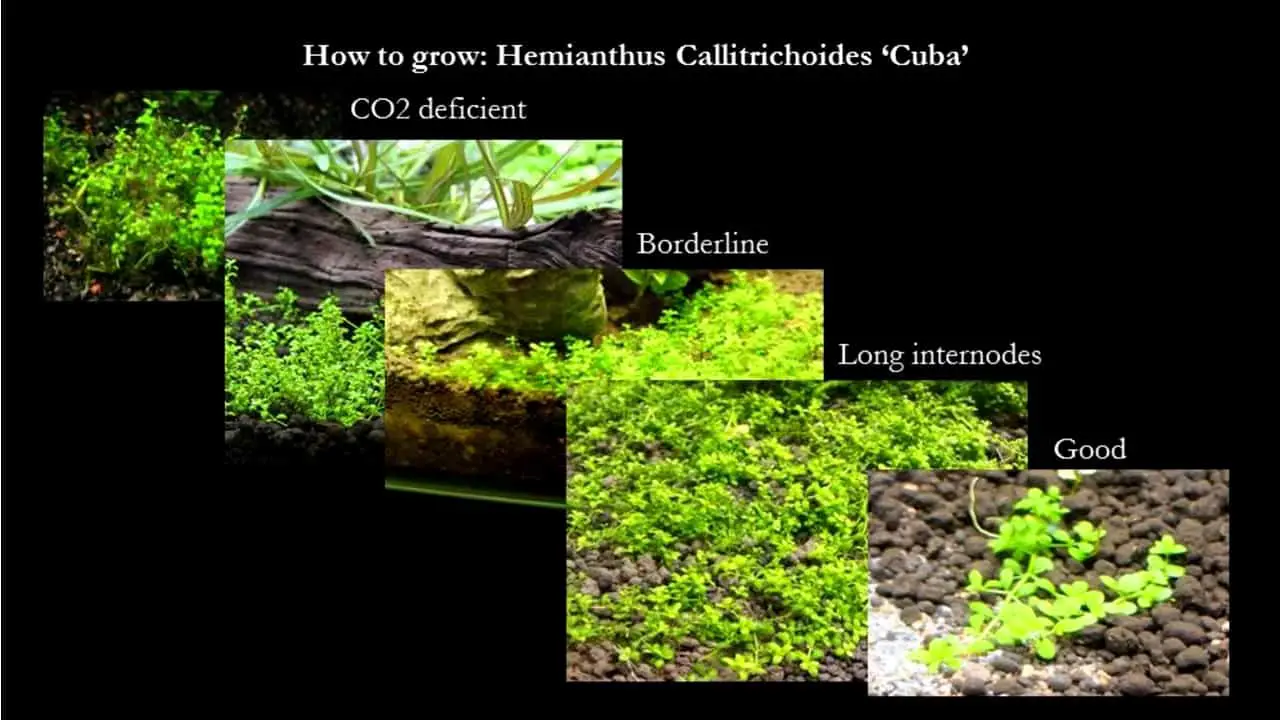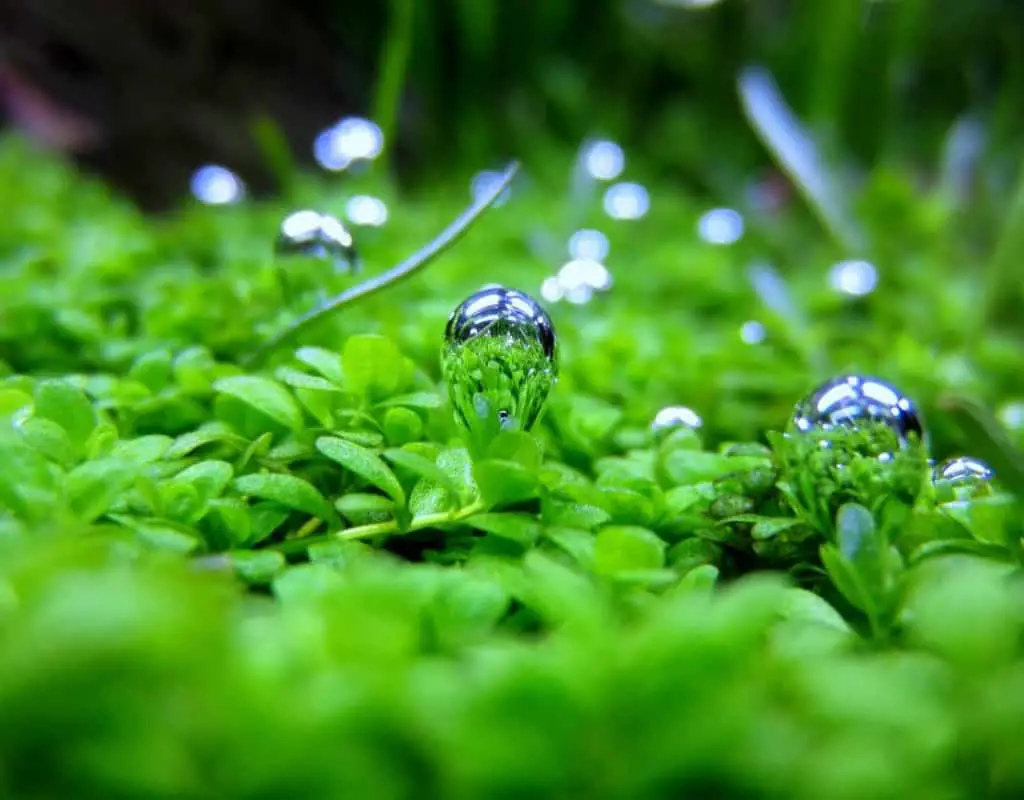Dwarf baby tears carpet are actually pretty predictable plants, and they are quite easy to grow as long as a few basic concepts are followed. These are the 4 main factors that will influence the success of the HC Cuba in ascending order from easiest to most difficult to control.
4 Main Factors for Success
- Temperature
- Light
- Planting technique
- Co2.
Water Temperature
Draw baby tears, just like most aquatic plants can actually survive in a huge range of temperature. The sweet spot is somewhere between 70-75 degrees Fahrenheit. At colder temperatures, the Dwarf baby tears grow a bit more slowly, but they are still survive. At hotter temperatures towards 85 degrees you can still have a nice carpets. However growth may not be full. and you will face other problems that I will describe in the later part of the blog.
Dwarf Baby Tears Light Requirements
The next factor is sometimes greatly exaggerated by a chorus, that HC needs a ton of light to grow. It goes well with just a medium amount of lighting. It will grow faster with higher lighting, but it is not necessary. You just need to make sure that they are not obstructed or shaded by other stem plants that you plant beside them.
Planting Technique
Next is planting technique. I will recommend breaking up bigger pieces of HC into smaller strands – between 3-5 strands each, before planting. Using smaller strands, allow each clump to get better access to lighting and flow. And allows them more space to spread as well. It also allows you to see the group of individual strands more clearly, and detect problems early.
Co2
The next factor for success with HC and also the most important one is good Co2 control.
Looking to hundreds of examples on forums with people having problems with the HC carpet, a full 90-95% of them cannot grow Hemianthus Callitrichoides because of poor Co2 control. This problem is exaggerated in warm tanks.
Fluval Plant 3.0 LED Planted Aquarium Lighting, 32 Watts, 24-34 Inches
Boyd Enterprises CPGNnano5 Chemi-Pure Green Nano 5 Pack Aquarium Filtration
5% OffFzone 1.2 Gal Nano Rimless Auqarium Low Iron Fish Tank NovaClear Ultra-White Translucent Glass Verso Series Nano Shallow Pond Levitating Floating Air Aquarium(A20C-H12)
$29.99 (as of July 13, 2024 17:55 GMT +03:00 - More infoProduct prices and availability are accurate as of the date/time indicated and are subject to change. Any price and availability information displayed on [relevant Amazon Site(s), as applicable] at the time of purchase will apply to the purchase of this product.)If we compare two tanks, one at 70 degrees Fahrenheit and another one at 85 degrees Fahrenheit, plant metabolism in the warmer tank is double than the plant at 70 degrees Fahrenheit. And yes, Co2 is harder to dissolve in warmer water.
For folks living in the temperate countries, that barely see HC carpet and have no livestock to consider about. Perhaps the easiest method is to try growing it at 70 degrees instead of the warmer water. For those of us in the tropics, any method you can use to cool down the water whether by using fans or having an air-conditioned room will make growing HC much easier. Every degree matters.

Spotting Co2 Deficiency in HC
To get a good dwarf baby tears carpet going, the most important part is spotting Co2 deficiency early. To be able to identify the key signs that the plant needs more Co2 in order to spread, there are 2 key characteristics to identifying HC that is Co2 deficient:
- The first is that the stems not creep but start to point upwards.
- The second is that the leaves become incrementally smaller, with the growth tip having the smallest leaves compared to the old-growth.
At this point, the most common question I get asked by everyone is,
how do you know it is not a nutrient deficiency? how do you know it is a Co2 deficiency?
By far, the easiest method is by comparing the other plants in the tank to the HC carpet. If you have stem plants in your planted nano tank, they have much better access to light, flow as well as Co2 in the water column.
Stem plants, they have access to the middle of the water column, probably have upwards of double the light as well as access to Co2 the carpet plants get. So if your stem plants are not showing any signs of nutrient deficiencies at all, then it is extremely unlikely that the carpet plant with a smaller mass and access to the nutrient substrate are nutrient deficient.
Nutrient deficiencies are the result of growth, not a result of non growth. So if you have HC carpet, there is not spreading in the first place, it is very unlikely that it is due to the lack of nutrients. After all, 40% of all plant mass is carbon.
The next common comment I get is “but my drop checker is green”. The Co2 drop checker can remain green over a large range of Co2 values. Is like using training wheels on a bicycle, it keeps you safe but doesn’t really get you anywhere. Learning to read plant and fish response to Co2 levels, is a much more accurate method to tune Co2.
Co2 Level In HC Tank
Because the nutrient, there is most likely to be deficient in most plants in carbon. Diagnostic nutrient deficiencies, is not as easy as comparing the picture of your plant to some diagram on the internet that shows yellowing leaves. Because carbon is so important for plant growth, a lot of Co2 will manifest itself in many forms of coral growth, and these are often misdiagnosed for nutrient deficiencies, when it is in fact a Co2 deficiency.
Since identifying Co2 deficiency in dwarf baby tears is such a key success factor, I will go through the various stages of improving Co2 conditions and corresponding form the HC.
A very poor levels – there will be hardly any growth, even after a few weeks and most of the stems will be upright with leaves gradually getting smaller and smaller.
Medium Co2 levels – the HC will grow, but again most of the growth is a vertical rather than horizontal, and the leaves will be healthy but they will be very small.
In these borderline cases, you can get a carpet that looks decent by continual pruning, however it won’t be in density as if that the conditions were provided. This is sparse growth but this is not too bad. Most of the leaves are large than healthy and most of the growth is creeping. This carpet will go to be nice and dense in time to come. However the length between the strands is still slightly further apart. It can be denser if better conditions will provided.

The growth is entirely flattened against the substrate. The leaves are large and thick and closely spaced on the stem. The longer the HC has been growing in a Co2 deficient state, the less energy the plant has and the longer it will take to turn around.
Trimming HC
HC is pretty easy to trim actually. Just mold out the carpet at regular intervals. Once in a long while, it is good to trim the HC extremely deeply right down to the substrate level. Deep trimming allow new growth attached to the substrate well and prevent a thick carpet from uplifting in the long run.
In Conclusion
The key to getting a successful HC carpet is to recognize the symptoms of Co2 deficiency early and adjust either the flow or the injection rate of Co2 to compensate.




















